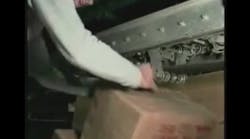Few things are uglier than the consequences of an unsafe work environment. However, I can think of a close second in that ugliness contest. It’s when safety is used as a weapon. When warring sides of labor disputes use safety as a tool for injury, safety’s closest ally goes out the door. That ally is trust.
We’ve reported instances where OSHA came down hard on employers who came down hard on “whistleblowers.” A whistleblower is an employee who notifies OSHA of an unsafe working environment. The whistleblower protections under the Occupational Safety & Health Act prohibit retaliation against an employee who files a hazard complaint with OSHA or who speaks privately to an inspector during a site inspection or accident investigation. Despite that provision, there’s a long list of employers who have fired such employees for doing just that—although they usually cite a different reason for the disciplinary action. Thus, safety can become a weapon in the hands of an employer.
There are also cases where organized labor uses safety as a weapon against non-union employers. David Sparkman, a member of MH&L’s editorial advisory board, also happens to be the editor of ACWI Advance, the newsletter for the American Chain of Warehouses. In their most recent issue there was an article on what employers can do if an OSHA inspector shows up at their door with a union representative in tow. The article notes that unions are starting to take advantage of certain aspects of the Whistleblower guarantees—including one that states a complaining employee at a nonunion company can request a union representative accompany an OSHA inspector who is investigating a work site.
That’s happening with the Service Employees International Union, which is sending representatives to sites owned by Professional Janitorial Service to accompany OSHA inspectors as they tour those operations. PJS is the largest non-union janitorial company in Houston.
OSHA regulations allow employees to select “an employee representative” to accompany inspectors, but until an OSHA determination in February 2013, this did not include non-employees from outside the company, the article reported.
So if an outsider is brought in to take part in an OSHA inspection of your facility, do you have any legal recourse to deny that person’s participation? The article quotes an attorney from the law firm of Seyfarth Shaw LLP, who states that if your workplace has requirements for non-employee visitors, such as participating in an orientation program or wearing personal protective equipment (PPE), you can impose those requirements on the activist or organizer. You should also be explicit about who bears responsibility for any PPE and injuries, and determine whether the outsider is trained on hazards that may be present.
Those could be effective tactics to thwart or delay a union representative’s participation in an inspection, but as such, it’s a sad statement on the strides both sides of this Safety Tango are willing to take to maintain a dominant pose.
The ironic thing about that legal advice is that it’s good safety advice. Outsiders should be schooled in safety before touring your operations—especially if they’ll be seeing forklifts and conveyors. We’ve already discussed the many dangers associated with forklift operation, but those tend to overshadow the damage that can be done when conveyor safety is disregarded.
In a recent blog they posted, Hytrol, a manufacturer of conveyors used in manufacturing and distribution, offers guidelines for preparing outsiders to tour your site. In addition to advising that visitors maintain a buffer zone between themselves and any equipment, these people should also be inspected for loose clothes, accessories (e.g., watches, bracelets, or rings), or long hair that could be caught before being allowed near a conveyor line. “This is one of the most common conveyor-related injuries, and the consequences can be devastating,” Hytrol says. The company also recommends that any required safety apparel (e.g., vests, earplugs, boots, hair nets, etc.) should be provided or required before plant entry. I guess whether you provide it or require it can depend on how welcome your guests are.
Welcome or not, you are responsible for the safety of all visitors once they make it to where the material handling action is. This is why you need to make sure employees are your allies in safety. Hytrol recommends that all employees be well versed in conveyor safety when guests are around. In fact, they should be authorized to stop people, to interrupt tours, to ask questions, and to otherwise help ensure visitor safety.
According to the U.S. Department of Labor, more than 50 workplace fatalities are attributed to conveyors every year. By working closely with your fellow employees to diminish any dangers at your site, you may also be able to focus safety’s power on repairing labor relations rather than damaging them.
See our latest video gallery, Conveyor Danger—Caught on Video, for the variety of ways people get into and out of trouble around this equipment. Go There from HERE.




